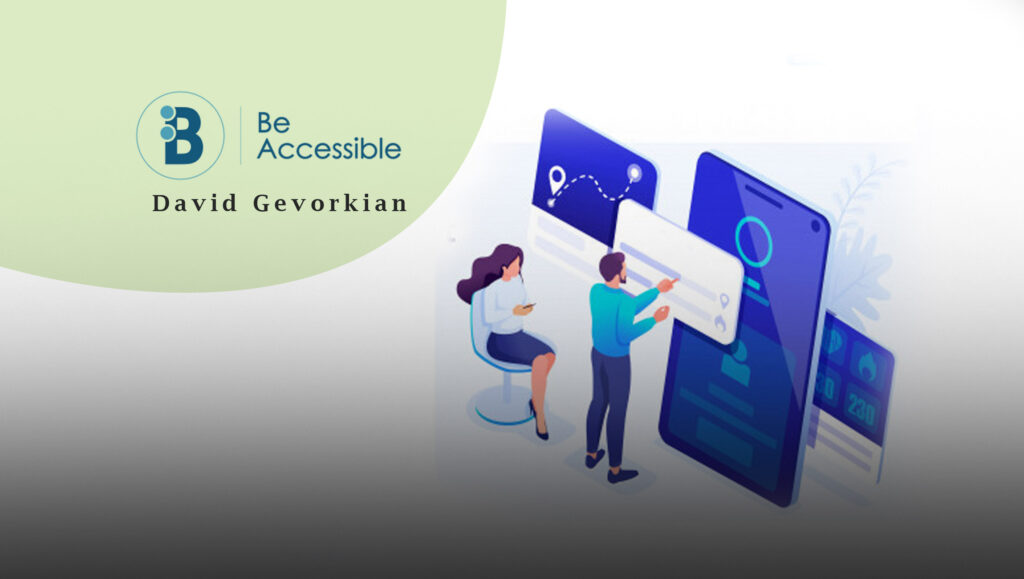You would think that the World Wide Web is one of life’s greatest equalizers. It provides everyone access to information. All users are afforded opportunities to learn, connect, and enjoy life in the digital world or at least that’s what most of us believe. Unfortunately, one out of five Americans would say otherwise. The largest minority in the world—people with disabilities—are not always able to enjoy the same access and opportunities in the digital world that many people tend to take for granted.
Even though customers with disabilities make up 10% of total online spending, many businesses have yet to take the steps ensuring that their products and/or services are accessible to all. If an American’s with Disabilities ACT (ADA) compliance audit was conducted on your business website, how accessible would your products/services be to people with disabilities? Do you even know what web accessibility is and what it means for your business?
Read More: How does communication and better collaboration help during a global pandemic?
What is Web Accessibility?
Web accessibility means that your digital products, services, websites, and web tools are designed to be accessible and usable by all, including those who have disabilities and those with limited software or hardware access. For example, a person who is blind or has a visual impairment must be able to access your company’s website and all of the content including videos and images.
There are plenty of reasons why businesses need to be concerned about web page accessibility. Here are a few to consider:
- Web accessibility can improve your branding because it proves to your customers that you care about their needs. As a result, you’re able to increase customer loyalty.
- Web accessibility also increases your market reach. Making sure that people with disabilities have access to your digital products/services will help you gain their business, and thus convert them into paying customers.
- Web accessibility and UX go hand in hand. When you design your digital products and/or services, you make sure that they are easy to use across all platforms. This is appreciated by more than just people with disabilities. In fact, some features that were created for accessibility purposes such as color contrast in Android phones are widely used and enjoyed by all.
Aside from these benefits, businesses need to ensure ADA compliance because it’s the law.
● The Americans with Disabilities Act
The Americans with Disabilities Act or ADA is a civil rights law that was made in 1990. The law was enacted to prevent discrimination against disabled individuals in all areas of public life. This means that disabled individuals must receive the same opportunities and access to activities provided by places open to the public such as restaurants, recreation facilities, schools, and movie theaters.
● Section 508
Section 508 of the Rehabilitation Act states that U.S. federal government agencies must acquire, develop, and use electronic and informational technology (EIT) that is accessible to all individuals, regardless of their capabilities. For example, any software acquired and used by a U.S. federal government agency must be usable by employees and members of the public who have a disability.
● World Wide Web Consortium
The World Wide Web Consortium (W3C) is an international community of organizations from various IT industries. This organization was established in 1994 by Tim Berners-Lee who is the creator of the World Wide Web. Its aim is to improve the web which includes developing standards of web accessibility so that all websites function the same in all web browsers.
● Voluntary Product Accessibility Template
The Voluntary Product Accessibility Template or VPAT is a self-disclosing document used by an information and communication technology (ICT) vendor. It details how their product or service complies with the standards stated in Section 508 of the U.S. Rehabilitation Act of 1973. Buyers can use the VPAT to determine the level of accessibility the ICT has. It also informs them if there are any deficiencies that need to be considered.
Read More: Why does the tech marketplace need more special-needs friendly work models?
Application of Web accessibility
The W3C produced the web accessibility guidelines to help developers and organizations in making their web content more accessible to disabled individuals. Some of these guidelines include but are not limited to the following:
● Enable keyboard navigation
Not all individuals can use a mouse to navigate a website. To make sure that your website can be navigated by everyone, you need to design your website for keyboard access. This means that all users should be able to access all of the functionalities of your website, including links and other interactive elements, using only their keyboard.
● Color contrast
Almost 10% of the population is color blind. In order for your web content to be accessible, text color needs to meet the recommended minimum contrast ratio between text and its background to ensure that the two are easily distinguishable.
● Text zoom
Text must be designed with relative measurements such as em or rem to allow users to zoom text only up to 200%. Text containers should also use relative measurements to ensure text does not overlap other content on the web page.
● HTML content order
Screen readers read the elements on a web page in a linear order which is dictated by how you wrote the source code. Make sure that the reading order of your content when presented to a screen reader matches the intended meaning of the author.
● Explanatory link text
Screen readers inform their users when a piece of text on a website is a link. If the word “services” has a link, the screen reader will say “link services.” It is important that you make sure that users can easily distinguish one link text from another by providing link text that accurately explains the purpose of the link. This enables users to skim content from one link to another without feeling confused and frustrated.
● Use a 44×44 px clickable area for touch controls
Based on the web accessibility guidelines, the clickable area for pointer or touch interaction should be 44 × 44 CSS pixels. This ensures that the area where you click your mouse or use your finger to activate an anchor link or button is big enough that even those with limited dexterity do not have problems, regardless of the size of their device’s screen.
Remember to follow the accessibility checklist
There are a lot of things you can do to ensure that your website is accessible. However, it’s easy to overlook one or more accessibility issues. To make sure that your website is compliant, make sure to always follow the accessibility checklist based on the web accessibility guidelines provided by the W3C.
Read More: Biggest CRM Fails And How To Avoid Them!
Accessibility and Usability
Usability, according to the official ISO 9241-11, means “the extent to which a product can be used by specified users to achieve specific goals with effectiveness, efficiency and satisfaction in a specified context of use.” Simply put, it just means that a product or website is easy to navigate and easy to use to accomplish your objective.
Accessibility is one factor that affects the usability of a website. When a website is designed for accessibility, it means that everyone can navigate, interact, and understand the content of a website, regardless of their ability.
Usability Guidelines
The Web Design and Usability Guidelines released by the U.S. Department of Health & Human Services aims to provide the public with the best practices in ensuring the usability of a website or application. The guidelines have 18 chapters which include topics such as hardware and software, headings and titles, navigation, links, lists, and test appearances.
Usability Testing
Usability testing helps developers and organizations in making sure that their website is easy to use. This is a process where you ask actual users or customers to test the website or application and provide feedback. Usability testing removes any bias and allows you to get insight on potential problems that can be fixed before you launch the product or service.
What is an accessibility guide and an accessibility statement
Your commitment to ensuring equal opportunity and access to all is clearly stated in your accessibility guide and accessibility statement. The accessibility guide is sort of a manual, teaching users how to use adaptive equipment when visiting your website or using your digital product or service. It also informs your users or visitors of any temporary solutions they can use if you have not been able to achieve 100% web accessibility. The accessibility statement, on the other hand, provides users with information on what the company has done to be ADA compliant. The statement includes your accessibility goals, policies, and actions.
Conclusion
Web accessibility and usability are two important factors that affect user experience. When businesses place a priority on these two, you ensure easy access for all and increased customer satisfaction.




















